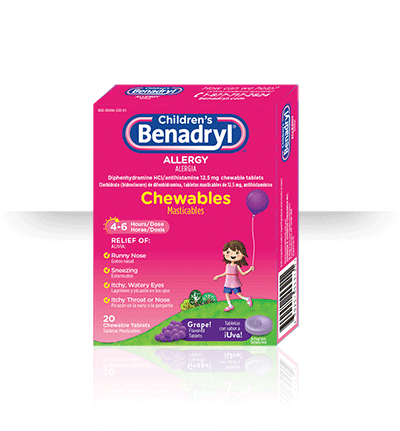When it comes to taking care of our little ones, their health and well-being are always top priorities. As parents, we often encounter situations where our children experience allergic reactions or struggle with occasional sleeplessness. In such instances, Benadryl, a popular over-the-counter medication, may come to mind. In this article, we will explore the benefits and considerations of using Benadryl for kids, ensuring you make informed decisions regarding your child’s health.
Here you for the Benadryl Dosing Chart
Understanding Benadryl
Benadryl, also known by its generic name diphenhydramine, is an antihistamine medication commonly used to relieve symptoms associated with allergies, including sneezing, itching, watery eyes, and runny nose. It works by blocking the effects of histamine, a chemical released by the body during an allergic reaction.
The Benefits of Benadryl for Kids
Allergy Relief: Benadryl can provide temporary relief from allergic symptoms caused by pollen, dust mites, pet dander, or certain foods. It can help alleviate discomfort and improve your child’s overall well-being during allergy seasons or exposure to allergens.
Itching and Skin Irritation: Children often experience itching and skin irritation due to insect bites, hives, or contact with certain substances. Benadryl can help reduce itching and soothe the affected areas, providing relief and promoting healing.
Sleep Aid: In some instances, children may have difficulty falling asleep due to allergies, congestion, or environmental factors. Benadryl’s sedating properties can help induce sleep when used under appropriate medical guidance. However, it is important to consult a healthcare professional before administering any sleep aid to your child.
Considerations and Precautions
Age and Dosage: Benadryl is approved for children aged 2 and above. However, dosage requirements vary based on the child’s age and weight. It is crucial to follow the recommended dosage guidelines provided by healthcare professionals or the product’s packaging. Overdosing can lead to serious side effects and should be avoided at all costs.
Consultation with Healthcare Professionals: It is always advisable to consult a healthcare professional before administering any medication to your child, including Benadryl. They can evaluate your child’s specific situation, provide accurate dosing instructions, and offer alternative treatment options if necessary.
Side Effects: While generally safe when used appropriately, Benadryl may cause side effects in some children. These can include drowsiness, dry mouth, constipation, blurred vision, or urinary retention. It is essential to monitor your child for any adverse reactions and seek medical attention if symptoms persist or worsen.
Drug Interactions: Inform your healthcare professional about any other medications or supplements your child may be taking. Certain medications, such as sedatives or antidepressants, may interact with Benadryl, potentially leading to increased drowsiness or other adverse effects.
Conclusion
Benadryl can be a helpful tool in managing allergies and providing relief from certain symptoms in children. However, it is crucial to use it responsibly and in consultation with healthcare professionals. Always follow the recommended dosages, be aware of potential side effects, and prioritize open communication with your child’s healthcare provider. By doing so, you can ensure the safe and effective use of Benadryl for your child, promoting their well-being and providing them the relief they need when necessary.




